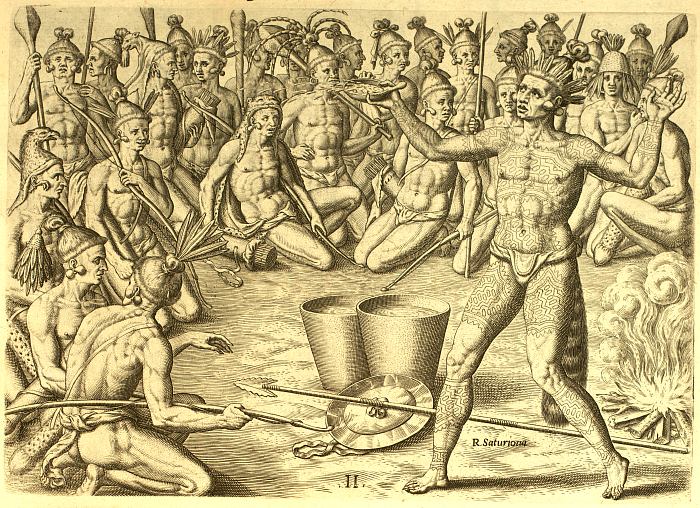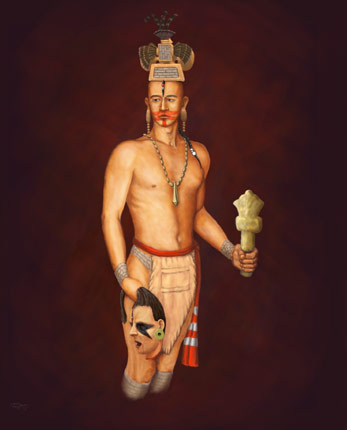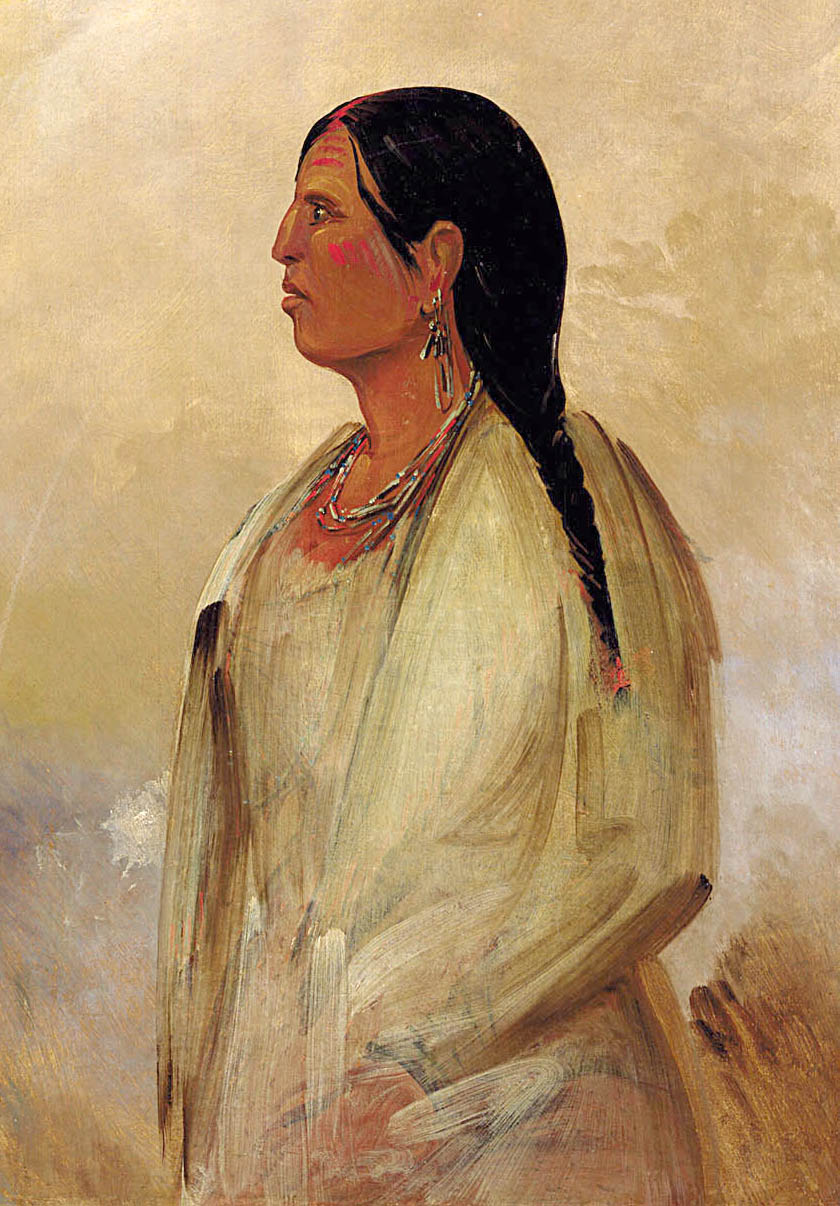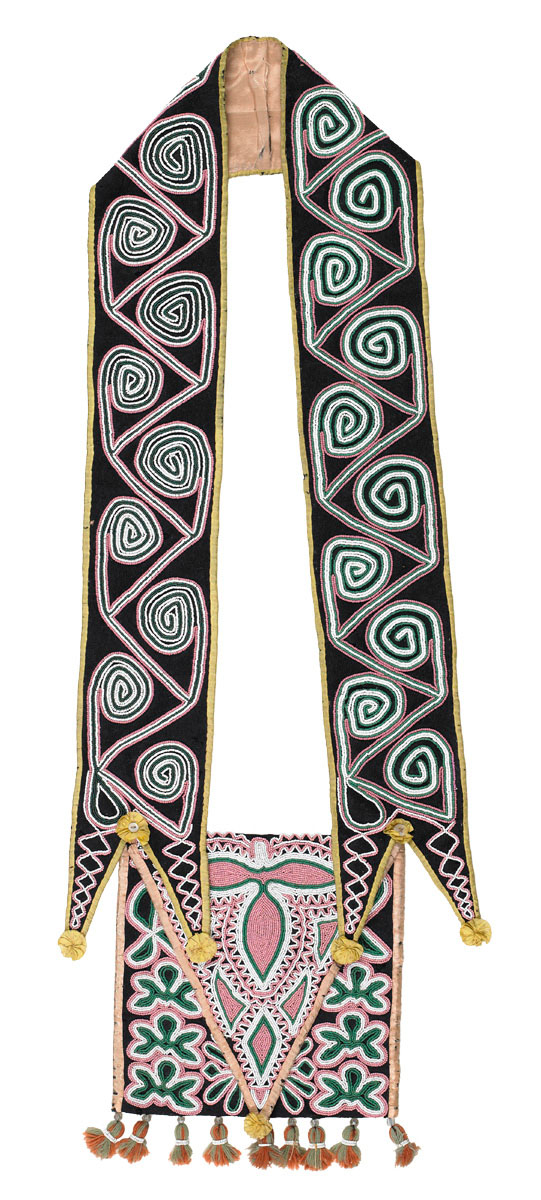|
Yaupon Tea
Yaupon tea (also known as "Beloved drink", "Cassina", "Big Medicine", or "White drink" by Natives; and "Black drink", "Carolina Tea", "South Seas Tea", or "Indian tea" by Europeans) refers to several kinds of caffeinated beverages originally brewed by Native Americans in the Southeastern United States and later adopted by Europeans and Americans. In It is generally brewed from yaupon holly ('' Ilex vomitoria''), which is native to the Atlantic and Gulf Coasts, and is related to yerba mate (''Ilex paraguariensis'') and guayusa. The Native drink may also have included the related dahoon holly ('' Ilex cassine'') and other herbs. A highly concentrated yaupon beverage was used in various rituals, including purification ceremonies,YAUPON Ilex vomitoria Aiton ''Natural Resources Conservation Service: Plant Guide''. [...More Info...] [...Related Items...] OR: [Wikipedia] [Google] [Baidu] |
Yuchi People
The Yuchi people are a Native American tribe based in Oklahoma, though their original homeland was in the southeastern United States. In the 16th century, the Yuchi lived in the eastern Tennessee River valley. By the late 17th century, they had migrated south to Alabama, Georgia, and South Carolina, settling near the Muscogee Creek people.Jackson 416 Some also migrated to the Florida panhandle. After suffering heavy losses from epidemic diseases and warfare in the 18th century, the remaining Yuchi bands were forcibly relocated to Indian Territory in the 1830s, alongside their allies, the Muscogee Creek. Today, the Yuchi primarily reside in northeastern Oklahoma, where many are enrolled citizens of the federally recognized Muscogee (Creek) Nation. They continue to maintain a distinct cultural identity, with some members still speaking the Yuchi language, a linguistic isolate. Name The term ''Yuchi'' translated to "over there sit/live" or "situated yonder." Their autonym, or n ... [...More Info...] [...Related Items...] OR: [Wikipedia] [Google] [Baidu] |
Florida
Florida ( ; ) is a U.S. state, state in the Southeastern United States, Southeastern region of the United States. It borders the Gulf of Mexico to the west, Alabama to the northwest, Georgia (U.S. state), Georgia to the north, the Atlantic Ocean to the east, the Straits of Florida to the south, and The Bahamas to the southeast. About two-thirds of Florida occupies a peninsula between the Gulf of Mexico and the Atlantic Ocean. It has the List of U.S. states by coastline, longest coastline in the contiguous United States, spanning approximately , not including its many barrier islands. It is the only state that borders both the Gulf of Mexico and the Atlantic Ocean. With a population of over 23 million, it is the List of U.S. states and territories by population, third-most populous state in the United States and ranks List of states and territories of the United States by population density, seventh in population density as of 2020. Florida spans , ranking List of U.S. states ... [...More Info...] [...Related Items...] OR: [Wikipedia] [Google] [Baidu] |
Fasting
Fasting is the act of refraining from eating, and sometimes drinking. However, from a purely physiological context, "fasting" may refer to the metabolic status of a person who has not eaten overnight (before "breakfast"), or to the metabolic state achieved after complete digestion and absorption of a meal. Metabolic changes in the fasting state begin after absorption of a meal (typically 3–5 hours after eating). A '' diagnostic fast'' refers to prolonged fasting from 1–100 hours (depending on age), conducted under observation, to facilitate the investigation of a health complication (usually hypoglycemia). Many people may also fast as part of a medical procedure or a check-up, such as preceding a colonoscopy or surgery, or before certain medical tests. '' Intermittent fasting'' is a technique sometimes used for weight loss or other health benefits that incorporates regular fasting into a person's dietary schedule. Fasting may also be part of a religious ritual, often asso ... [...More Info...] [...Related Items...] OR: [Wikipedia] [Google] [Baidu] |
Emetic
Vomiting (also known as emesis, puking and throwing up) is the forceful expulsion of the contents of one's stomach through the mouth and sometimes the nose. Vomiting can be the result of ailments like food poisoning, gastroenteritis, pregnancy, motion sickness, or hangover; or it can be an after effect of diseases such as brain tumors, elevated intracranial pressure, or overexposure to ionizing radiation. The feeling that one is about to vomit is called nausea; it often precedes, but does not always lead to vomiting. Impairment due to alcohol or anesthesia can cause inhalation of vomit. In severe cases, where dehydration develops, intravenous fluid may be required. Antiemetics are sometimes necessary to suppress nausea and vomiting. Self-induced vomiting can be a component of an eating disorder such as bulimia nervosa, and is itself now classified as an eating disorder on its own, purging disorder. Complications Aspiration Vomiting is dangerous if gastric content en ... [...More Info...] [...Related Items...] OR: [Wikipedia] [Google] [Baidu] |
Cahokia
Cahokia Mounds ( 11 MS 2) is the site of a Native American city (which existed 1050–1350 CE) directly across the Mississippi River from present-day St. Louis. The state archaeology park lies in south-western Illinois between East St. Louis and Collinsville. The park covers , or about , and contains about 80 manmade mounds, but the ancient city was much larger. At its apex around 1100 CE, the city covered about , included about 120 earthworks in a wide range of sizes, shapes, and functions, and had a population of between 15,000 and 20,000 people."Nomination – Cahokia Mounds State Historic Site, Illinois" ''US World Heritage Sites'', National Park Service, accessed May 3, 2012 Cahokia was the largest an ... [...More Info...] [...Related Items...] OR: [Wikipedia] [Google] [Baidu] |
Mississippian Culture
The Mississippian culture was a collection of Native American societies that flourished in what is now the Midwestern, Eastern, and Southeastern United States from approximately 800 to 1600 CE, varying regionally. It was known for building large, earthen platform mounds, and often other shaped mounds as well. It was composed of a series of urban settlements and satellite villages linked together by loose trading networks. The largest city was Cahokia, believed to be a major religious center, located in what is present-day southern Illinois. The Mississippian way of life began to develop in the Mississippi River Valley (for which it is named). Cultures in the tributary Tennessee River Valley may have also begun to develop Mississippian characteristics at this point. Almost all dated Mississippian sites predate 1539–1540 (when Hernando de Soto explored the area), with notable exceptions being Natchez communities. These maintained Mississippian cultural practices into the 1 ... [...More Info...] [...Related Items...] OR: [Wikipedia] [Google] [Baidu] |
Indigenous Peoples Of The Southeastern Woodlands
Indigenous peoples of the Southeastern Woodlands, Southeastern cultures, or Southeast Indians are an ethnographic classification for Native Americans who have traditionally inhabited the area now part of the Southeastern United States and the northeastern border of Mexico, that share common cultural traits. This classification is a part of the Eastern Woodlands. The concept of a southeastern cultural region was developed by anthropologists, beginning with Otis Mason and Franz Boas in 1887. The boundaries of the region are defined more by shared cultural traits than by geographic distinctions.Jackson and Fogelson 3 Because the cultures gradually instead of abruptly shift into Plains, Prairie, or Northeastern Woodlands cultures, scholars do not always agree on the exact limits of the Southeastern Woodland culture region. Shawnee, Powhatan, Waco, Tawakoni, Tonkawa, Karankawa, Quapaw, and Mosopelea are usually seen as marginally southeastern and their traditional lands represen ... [...More Info...] [...Related Items...] OR: [Wikipedia] [Google] [Baidu] |
Chitimacha
The Chitimacha ( ; or ) are an Indigenous people of the Southeastern Woodlands in Louisiana. They are a federally recognized tribe, the Chitimacha Tribe of Louisiana. The Chitimacha have an Indian reservation in St. Mary Parish near Charenton on Bayou Teche. Their reservation is a small part of their precontact territory. They are the only Louisiana tribe who still control some of their original land, where they have long occupied areas of the Atchafalaya Basin, "one of the richest inland estuaries on the continent."''NATIVE WATERS: A CHITIMACHA RECOLLECTION'' (1/30/2011) , American Public Television, Louisiana Public Broadcasting; accessed 20 September 2011 In 2011 they numbered about 1100 people. Historically, the Chitimacha spoke ... [...More Info...] [...Related Items...] OR: [Wikipedia] [Google] [Baidu] |
Timucua
The Timucua were a Native American people who lived in Northeast and North Central Florida and southeast Georgia. They were the largest indigenous group in that area and consisted of about 35 chiefdoms, many leading thousands of people. The various groups of Timucua spoke several dialects of the Timucua language. At the time of European contact, Timucuan speakers occupied about in the present-day states of Florida and Georgia, with an estimated population of 200,000. Milanich notes that the population density calculated from those figures, is close to the population densities calculated by other authors for the Bahamas and for Hispaniola at the time of first European contact. The territory occupied by Timucua speakers stretched from the Altamaha River and Cumberland Island in present-day Georgia as far south as Lake George in central Florida, and from the Atlantic Ocean west to the Aucilla River in the Florida Panhandle, though it reached the Gulf of Mexico at no more than ... [...More Info...] [...Related Items...] OR: [Wikipedia] [Google] [Baidu] |
Muscogee People
The Muscogee, also known as the Mvskoke, Muscogee Creek or just Creek, and the Muscogee Creek Confederacy ( in the Muscogee language; English: ), are a group of related Indigenous peoples of the Southeastern WoodlandsTranscribed documents Sequoyah Research Center and the American Native Press Archives in the . Their historical homelands are in what now comprises southern , much of , western |
Choctaw
The Choctaw ( ) people are one of the Indigenous peoples of the Southeastern Woodlands of the United States, originally based in what is now Louisiana, Mississippi and Alabama. The Choctaw language is a Western Muskogean language. Today, Choctaw people are enrolled in three federally recognized tribes: the Choctaw Nation of Oklahoma, Mississippi Band of Choctaw Indians, Jena Band of Choctaw Indians in Louisiana. Choctaw descendants are also members of other tribes. Etymology The Choctaw autonym is Chahta. "Choctaw" is an anglicized spelling. According to anthropologist John R. Swanton, the Choctaw derived their name from an early leader of the Choctaw people. Language The Choctaw language belongs to the Muskogean language family. The Choctaw language was well known among the American frontiersmen of the early 19th century. In 1870, a Christian Missionary and fluent Choctaw speaker Cyrus Byington published a Choctaw Dictionary ''Grammar of the Choctaw Language.'' Revi ... [...More Info...] [...Related Items...] OR: [Wikipedia] [Google] [Baidu] |









